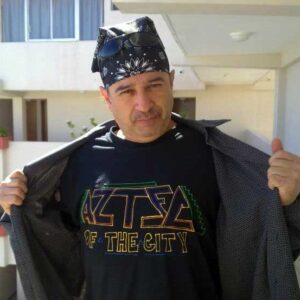Baja California Sur has been ranked among the five Mexican states with the lowest poverty levels, according to the latest figures from the National Institute of Statistics and Geography (INEGI).
Officials attribute the decline in multidimensional poverty to higher employment, better wages, and expanded social programs. Omar Zavala Agúndez, head of the Ministry of Labor, Welfare and Social Development (STBDS), credited state policies promoted by Governor Víctor Manuel Castro Cosío and aligned with President Claudia Sheinbaum’s Plan Mexicox, which emphasizes formal employment, wage growth, and social inclusion.
Among the state’s achievements: the National Employment Service has placed more than 22,000 people in jobs, while the State Training Institute has certified over 32,000 residents in technical and service skills.
“With appropriate policies, political will, and citizen participation, it is possible to combat poverty and improve quality of life,” Zavala Agúndez said. Support programs for older adults, people with disabilities, single mothers, and youth have also helped strengthen family incomes.
Still, officials acknowledge challenges ahead, particularly in rural and fishing communities, where economic hardships persist despite the state’s overall progress.
Nationwide, nearly half the residents of Chiapas, Guerrero, and Oaxaca still lack basic services such as piped water, drainage, sanitation, and electricity, triple the national average, according to INEGI’s 2024 Household Income and Expenditure Survey.
About 18.4 million Mexicans, or 14.1 percent of the population, lived in homes without basic services in 2024. While this represents a drop of nearly six million since 2018, southern states continue to lag far behind.
Chiapas has the highest proportion of residents in deficient housing at 48.6 percent, followed by Guerrero (47.4) and Oaxaca (46.7). These states also report the highest rates of multidimensional poverty: Chiapas (66 percent), Guerrero (58.1), and Oaxaca (51.6).
In contrast, northern states such as Nuevo León (1.9 percent), Coahuila (1.9), Aguascalientes (2), and Mexico City (2.4) report near-universal access to basic services.
The five states with the lowest multidimensional poverty rates are: Baja California (9.9 percent), Baja California Sur (10.2), Nuevo León (10.6), Coahuila (12.4), and Sonora (14.1).
BCS’s performance is notable given its economic dependence on tourism. Los Cabos alone attracts more than 4.1 million visitors annually, generating over $1.2 billion in economic impact, according to the Los Cabos Tourism Trust (FITURCA).
Despite Los Cabos’ booming tourism, marked by luxury resorts, golf courses, and exclusive real estate, the benefits are unevenly shared. INEGI data shows that many residents still grapple with food insecurity, low wages, and marginalization, underscoring the state’s paradox: world-class tourism alongside persistent poverty.




